-
Pearl
- Ultimate Contributor

- Posts: 8069
- Joined: Mar 30, 2009
- Location: Deep inside the sea
-
Contact:
Post
by Pearl » Oct 08, 2009 Views: 1761
[center]
DASTARDLY WEEDS AND HOW TO WIPE THEM OUT
Part 1
[/center]
Plantain (Plantago species)
Plantains are perennials that form rosettes of dark green leaves marked from end to end with distinctive parallel veining. Leaves of P. lanceolata (buckhorn plantain) are long and narrow; those of P. major (broadleaf plantain) are broadly oval. They love damp, heavy soil.
To reduce infestations in lawns, keep the turf thick through consistent fertilizing; aerating will help, too. Dig out plantains before they set seed. Be sure to remove as much of the roots as possible (a dandelion weeder is helpful here), since these weeds can regrow from any pieces of the rootstalk that remain.
For chemical control, use a pre-emergence product or spot-treat plantains in the garden with glyphosate, taking care not to get the chemical on desirable plants.
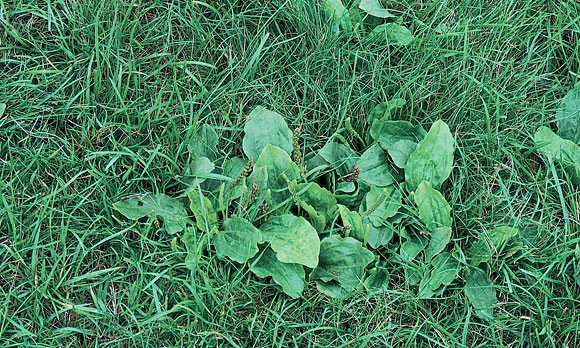
Last edited by
Pearl on Oct 08, 2009, edited 1 time in total.
-
Pearl
- Ultimate Contributor

- Posts: 8069
- Joined: Mar 30, 2009
- Location: Deep inside the sea
-
Contact:
Post
by Pearl » Oct 08, 2009
Common mallow (Malva neglecta)
Also known as cheeseweed (thanks to the fruits, which resemble a round of cheese), common mallow is a widespread annual or biennial weed with broad, lobed leaves and pinkish white, five-petaled flowers.
Hoe or pull these weeds when they're young. Mature plants have a long, tough taproot that is difficult to extract from the soil, and they are of course more likely to have set seed.
For chemical control, use a pre-emergence herbicide to prevent seedlings from becoming established in lawns and around ornamentals
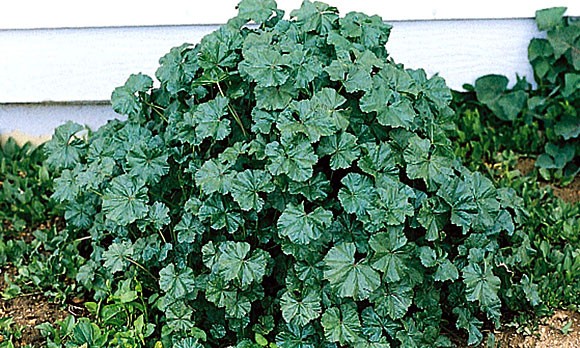
-
Pearl
- Ultimate Contributor

- Posts: 8069
- Joined: Mar 30, 2009
- Location: Deep inside the sea
-
Contact:
Post
by Pearl » Oct 08, 2009
Poison oak, Poison ivy
Poison oak is most common along the West Coast. In the open or in filtered sun, it forms a dense, leafy shrub; in the shade, it's a tall-growing vine. Its leaves are divided into three leaflets with scalloped, toothed or lobed edges.
Poison ivy looks similar; it's common east of the Rockies and also grows in eastern Oregon and eastern Washington. Usually found in shady areas and at the edges of woodlands, it sprawls along the ground until it finds something to climb, then becomes a vine.
A resin on both poison oak and poison ivy causes severe contact dermatitis in most people. Control both of these invaders with an appropriately labeled herbicide, such as glyphosate (be sure to avoid getting these chemicals on other plants).
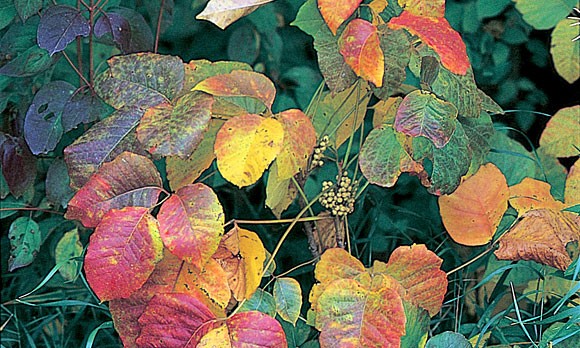
-
Pearl
- Ultimate Contributor

- Posts: 8069
- Joined: Mar 30, 2009
- Location: Deep inside the sea
-
Contact:
Post
by Pearl » Oct 08, 2009
Blackberry (Rubus species)
Wild blackberry can be a vexing weed almost anywhere in the United States, but it's particularly troublesome in the Northeast, the Southeast and many areas of the West. Plants spread rapidly by underground runners and by seed.
Pull young plants in spring, before they develop a perennial root system. To kill established clumps, repeatedly prune back the stems as they sprout; this eventually exhausts the roots. Or mow the tops and dig out the roots; repeat the process as new canes grow from roots left behind.
You can also cut stems to the ground and apply glyphosate to the stubs as soon as possible after cutting. Spot-treat any new shoots with glyphosate as they appear.
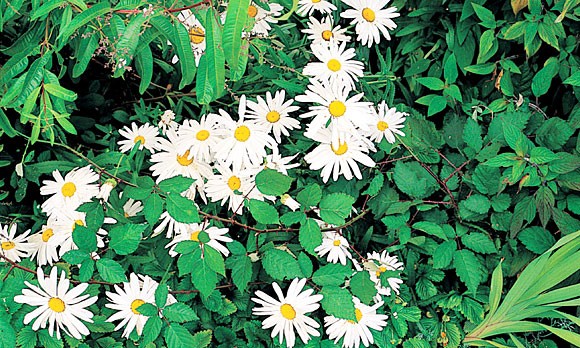
-
Sawera
- Extreme XciteFun Lover

- Posts: 2516
- Joined: Sep 03, 2009
Post
by Sawera » Oct 08, 2009
nice
-
Pearl
- Ultimate Contributor

- Posts: 8069
- Joined: Mar 30, 2009
- Location: Deep inside the sea
-
Contact:
Post
by Pearl » Oct 08, 2009
Puncture vine (Tribulus terrestris)
With its sharp, thorny burs that poke into tires, paws and bare feet, puncture vine is painfully familiar to gardeners in much of the country. An annual weed often found in dry areas, it forms a dense, low mat that is 5 to 15 feet in diameter.
For best control of small infestations, hoe or dig plants before they can set seed, cutting below the crown to prevent regrowth. Once you've removed puncture vine growing in lawns, improve the soil with compost and sow grass seed in bare spots to prevent the weeds from re-establishing.
For chemical control, pre-emergence herbicides containing trifluralin may be used on some lawn grasses and ornamentals in late winter or early spring. For post-emergence control in lawns, use a selective herbicide.
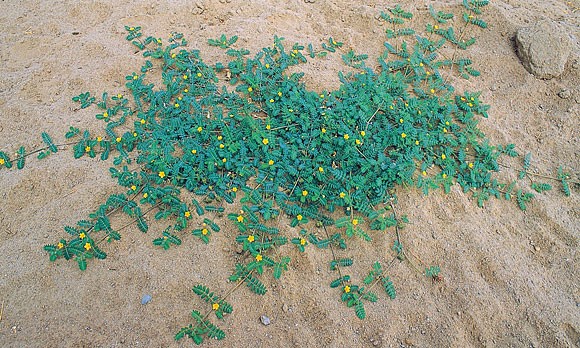
-
Pearl
- Ultimate Contributor

- Posts: 8069
- Joined: Mar 30, 2009
- Location: Deep inside the sea
-
Contact:
Post
by Pearl » Oct 08, 2009
Purslane (Portulaca oleracea)
Not to be confused with the large-flowered ornamental purslane sold in nurseries (the "Wildfire" strain, variously ascribed to Portulaca oleracea, P. umbraticola and P. grandiflora), weedy purslane is a low-growing summer annual found throughout the country.
It thrives in moist conditions but can withstand considerable drought. Its fleshy, dark green leaves are edible, with a tart, lemony flavor.
Purslane is easy to pull or hoe. But pieces of stem can reroot readily, so be sure to remove them from the garden. Also remove plants that have begun to flower, since they can ripen seed even after they've been pulled. Don't compost any part of the plant.
Purslane can also be naturally controlled with solarization.
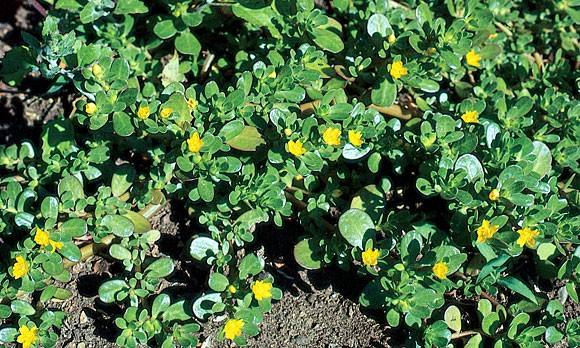
-
Pearl
- Ultimate Contributor

- Posts: 8069
- Joined: Mar 30, 2009
- Location: Deep inside the sea
-
Contact:
Post
by Pearl » Oct 08, 2009
Quack grass (Elytrigia repens)
Also known as couch grass or devil's grass, quack grass is an aggressive perennial that produces an extensive mass of long, slender, yellowish-white, branching rhizomes (underground stems) that can spread laterally 3 to 5 feet.
Thoroughly dig the area and remove all visible pieces of rhizome; this will slow the weed's growth for a few years. You can also suppress quack grass by smothering it; leave the cover in place for at least a year.
For chemical control, use pre-emergence herbicides on turf grasses and around ornamentals listed on the label. Spot-treat with an herbicide containing glyphosate, taking care to avoid contact with desirable plants.
-
Pearl
- Ultimate Contributor

- Posts: 8069
- Joined: Mar 30, 2009
- Location: Deep inside the sea
-
Contact:
Post
by Pearl » Oct 08, 2009
thanks sawera











